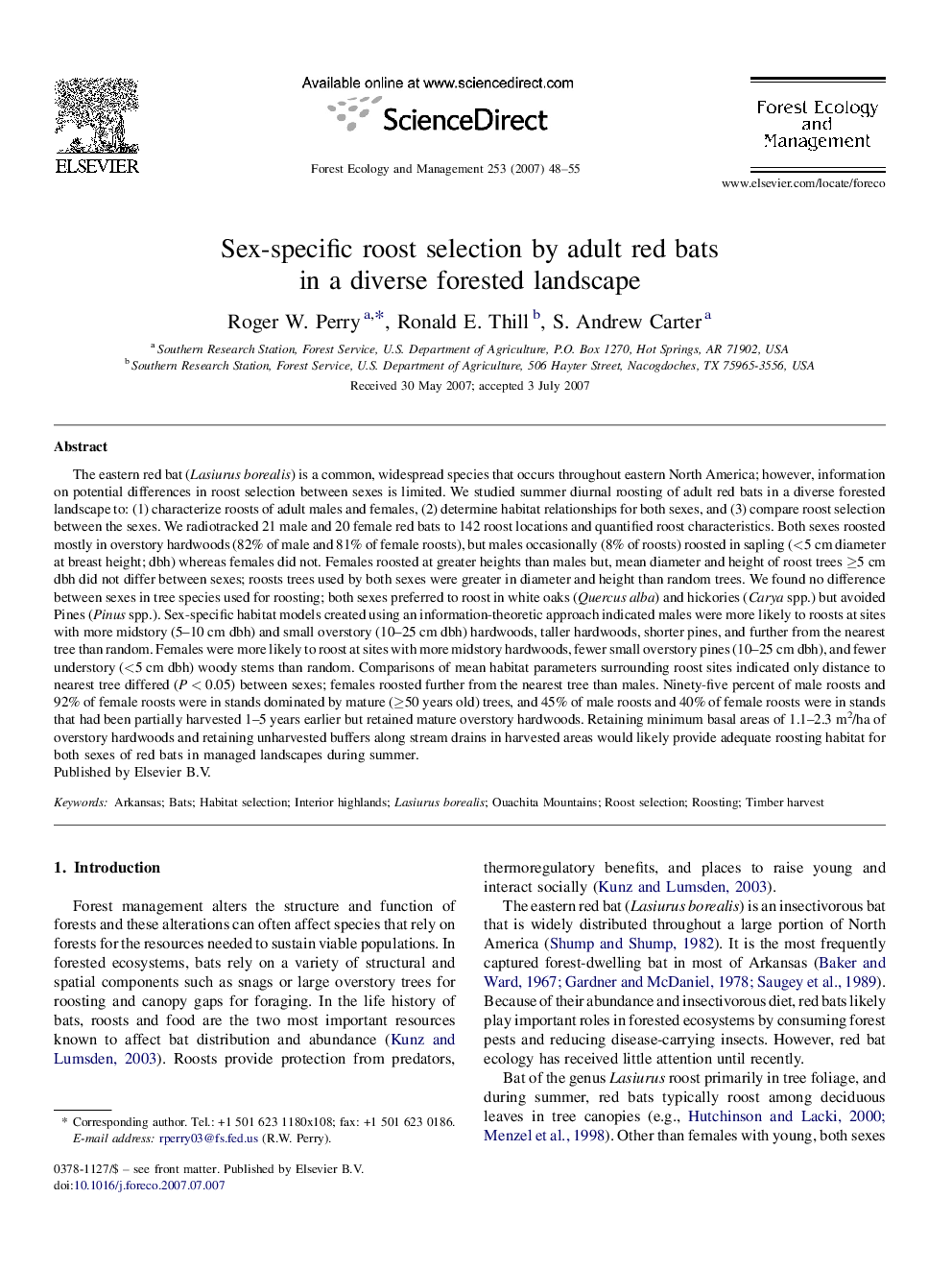| کد مقاله | کد نشریه | سال انتشار | مقاله انگلیسی | نسخه تمام متن |
|---|---|---|---|---|
| 89735 | 159354 | 2007 | 8 صفحه PDF | دانلود رایگان |

The eastern red bat (Lasiurus borealis) is a common, widespread species that occurs throughout eastern North America; however, information on potential differences in roost selection between sexes is limited. We studied summer diurnal roosting of adult red bats in a diverse forested landscape to: (1) characterize roosts of adult males and females, (2) determine habitat relationships for both sexes, and (3) compare roost selection between the sexes. We radiotracked 21 male and 20 female red bats to 142 roost locations and quantified roost characteristics. Both sexes roosted mostly in overstory hardwoods (82% of male and 81% of female roosts), but males occasionally (8% of roosts) roosted in sapling (<5 cm diameter at breast height; dbh) whereas females did not. Females roosted at greater heights than males but, mean diameter and height of roost trees ≥5 cm dbh did not differ between sexes; roosts trees used by both sexes were greater in diameter and height than random trees. We found no difference between sexes in tree species used for roosting; both sexes preferred to roost in white oaks (Quercus alba) and hickories (Carya spp.) but avoided Pines (Pinus spp.). Sex-specific habitat models created using an information-theoretic approach indicated males were more likely to roosts at sites with more midstory (5–10 cm dbh) and small overstory (10–25 cm dbh) hardwoods, taller hardwoods, shorter pines, and further from the nearest tree than random. Females were more likely to roost at sites with more midstory hardwoods, fewer small overstory pines (10–25 cm dbh), and fewer understory (<5 cm dbh) woody stems than random. Comparisons of mean habitat parameters surrounding roost sites indicated only distance to nearest tree differed (P < 0.05) between sexes; females roosted further from the nearest tree than males. Ninety-five percent of male roosts and 92% of female roosts were in stands dominated by mature (≥50 years old) trees, and 45% of male roosts and 40% of female roosts were in stands that had been partially harvested 1–5 years earlier but retained mature overstory hardwoods. Retaining minimum basal areas of 1.1–2.3 m2/ha of overstory hardwoods and retaining unharvested buffers along stream drains in harvested areas would likely provide adequate roosting habitat for both sexes of red bats in managed landscapes during summer.
Journal: Forest Ecology and Management - Volume 253, Issues 1–3, 15 December 2007, Pages 48–55